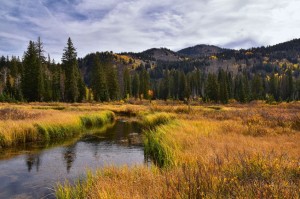 Landscape architecture is about more than putting a walkway from the front door to the street or planting pretty ornamental shrubs under the windows. Sustainable in landscape architecture can reduce water and energy costs for the property owner, and reduce waste, water and air pollution — all on top of reduced impact on the surrounding natural environment.
Landscape architecture is about more than putting a walkway from the front door to the street or planting pretty ornamental shrubs under the windows. Sustainable in landscape architecture can reduce water and energy costs for the property owner, and reduce waste, water and air pollution — all on top of reduced impact on the surrounding natural environment.
Sustainable landscape architecture can also help regenerate the surrounding environment and restore the natural landscape that existed before it was changed by human enterprise. It can help clean air and water and restore habitat for native plants, birds and animals.
In other words, sustainable landscape architecture is a win-win-win.
Let’s start with a few of the ideas underpinning the concept.
Idea 1: Water is a resource
Water has always been a critical issue in all aspects of life in Utah. The demand for water is increasing, so it’s crucial to manage water resources so that there is enough for residents, farms and industry.
Sustainable landscape architecture treats water as a resource. It integrates site layout, elevation, and plant selection to capture rainwater in order to conserve water, reduce or eliminate irrigation, reduce erosion and pollution of waterways.
Site architecture and layout of stone, slopes, walls and other features can harvest rain water, conserving it for dry periods. This reduces water costs and erosion. Permeable interlock pavers can direct rain water into the soil and underlying aquifers.
Idea 2: Soil is a resource
The basis of all landscaping is the soil — literally, what underlies all design. Sustainable landscape architecture takes into account the nature of the soil of the site.
Doing it right reduces soil compaction, which can lead to increased rain run-off, erosion and water pollution.
Idea 3: Use local resources and materials
Removing the existing plants, soil and stone from a site is a mistake: it disrupts the natural processes that happen even though we don’t see them. This can lead to erosion, water and air pollution and overall environmental degradation.
Instead, sustainable landscape architecture uses materials native to the area the site is located in, such as stone and soil found in the region. Using locally native plant and tree species helps reduce water demands and provides habitat to native animal and bird species, as well.
It’s also far more economical than transporting exotic materials and plants from hundreds or thousands of miles away.
Idea 4: Minimize use of materials
All too often, a landscaping project produces excess waste. This includes packaging materials, damaged landscaping materials and energy.
Energy waste result from transporting heavy landscaping materials, including exotic stones, over great distances. This has an impact on carbon emissions, in addition to often unforeseen consequences in and around the site.
Benefits of sustainable landscape architecture
Sustainable landscape architecture plans for the full lifespan of the project, taking into account the long-term energy and maintenance costs. Viewing water and soil as critical resources, using local materials and plants not only reduces costs, it leads to a longer lifespan for the project.
This perspective can help reduce maintenance and energy costs. Design that builds on the existing natural conditions can be less expensive to build, and requires less effort to control against erosion.
Choosing native plants, especially in Utah, can reduce the need for watering and irrigation. They’ll also live longer, further reducing costs of upkeep.
What’s more, thoughtful placement of trees can reduce energy costs for a building. Trees planted on the south side, for instance, will eventually provide shade that will reduce the need for air conditioning in summer. Planted in the way of prevailing winds can reduce heating needs in winter.
Make it work for your next project
Sometimes, a few changes to your existing landscape architecture can have major impacts on energy, water and maintenance in your building. But the best time to consider sustainable landscape architecture is before you start building.
For your next construction or renovation project, why not contact us at McNeil Engineering for a no-obligation talk.








